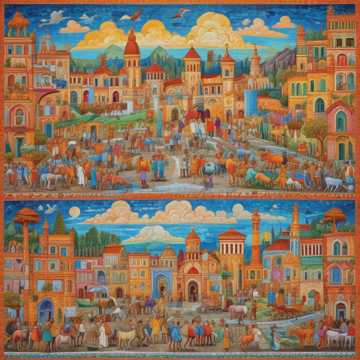On August 24, 79 AD, Mount Vesuvius awakened from centuries of slumber, forever changing the course of history. This cataclysmic event, while devastating, has provided us with an unparalleled window into ancient Roman life.
The Sleeping Giant Awakens
Mount Vesuvius, a seemingly dormant volcano near the Bay of Naples, Italy, had been quiet for generations. Its sudden eruption caught the nearby towns of Pompeii and Herculaneum completely off guard.
A City Frozen in Time
The eruption buried Pompeii under meters of ash and pumice, preserving it in remarkable detail. This tragedy became an invaluable gift to future generations, offering insights into daily life in the Roman Empire.
Key Facts
- Date: August 24, 79 AD
- Location: Bay of Naples, Italy
- Cities affected: Pompeii and Herculaneum
- Depth of ash: Up to 25 meters in some areas
- Rediscovery: 1748 by Spanish engineer Rocque Joaquin de Alcubierre
Key Figures
- Pliny the Younger: Eyewitness who provided a detailed account of the eruption
- Giuseppe Fiorelli: Italian archaeologist who pioneered the technique of creating plaster casts of victims
The Eruption’s Timeline
- Early morning: Small earthquakes begin
- Around 1 PM: A massive explosion marks the start of the eruption
- Next 18 hours: Continuous rain of ash and pumice
- Following morning: Pyroclastic surges sweep down the volcano, instantly killing those in their path
Unveiling Ancient Roman Life
The preservation of Pompeii has allowed archaeologists to piece together a vivid picture of Roman society. From elaborate frescoes to graffiti on walls, from food carbonized on dining tables to jewelry left behind in haste, each discovery tells a story.
Legacy and Impact
The eruption of Vesuvius has left an indelible mark on our understanding of history and volcanology. It serves as a stark reminder of nature’s power and the fragility of human civilization.
Today, Pompeii stands as one of the world’s most visited archaeological sites, continuing to educate and inspire millions of visitors each year.
Conclusion
The eruption of Mount Vesuvius in 79 AD was a pivotal moment in history. While it brought destruction, it also preserved a slice of Roman life, allowing us to walk through the streets of an ancient city frozen in time. As we continue to uncover its secrets, Pompeii remains a testament to human resilience and the enduring quest for knowledge.
Share this article to spread the fascinating story of Pompeii and the day Vesuvius roared!


